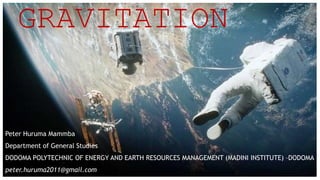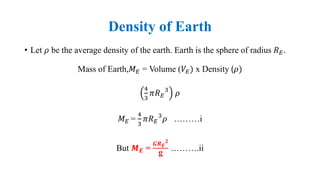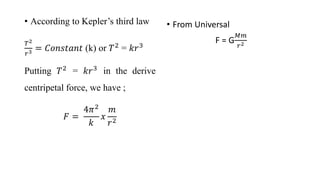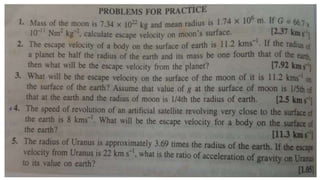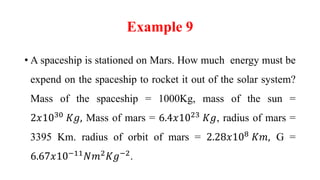The document covers the principles of gravitation, including acceleration due to gravity, Newton's law of universal gravitation, and calculations for gravitational force and mass of celestial bodies. It also discusses satellite motion, critical velocity, escape velocity, and provides examples and exercises related to these concepts. Additionally, it explains the differences between natural and artificial satellites, as well as various applications of artificial satellites.
